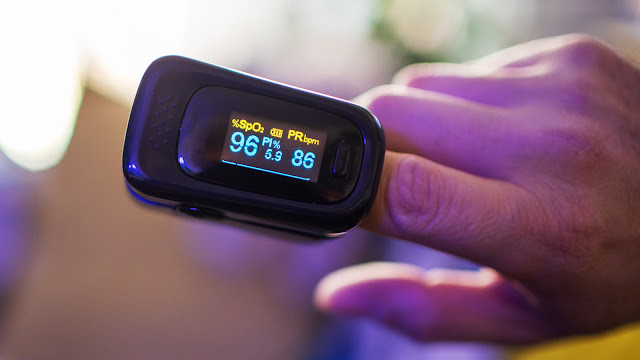The normal oxygen lavel
**Understanding Normal Oxygen Levels**
Oxygen is essential for life, and maintaining proper levels in the blood is vital for overall health and well-being. Normal oxygen levels are an important indicator of how well the respiratory and circulatory systems are working. This article discusses in depth what a normal oxygen level is, how it is measured, the factors that affect it, and what deviations from the norm may indicate.
Oxygen levels in the blood are typically measured in two ways: arterial blood gas (ABG) testing and pulse oximetry. The normal range of these measurements helps healthcare providers assess respiratory function and overall health.
1. **Arterial Blood Gas (ABG) Test**: This test measures the amount of oxygen (PaO2) and carbon dioxide (PaCO2) in arterial blood. The normal range of PaO2 in arterial blood is typically between 75 and 100 millimeters of mercury (mmHg).
2. **Pulse oximetry**: This non-invasive method uses a small device, often clipped to a finger or earlobe, to estimate the percentage of oxygenated hemoglobin in the blood. Normal oxygen saturation levels (SpO2) are usually between 95% and 100%. Values below 90% may indicate hypoxemia, which requires medical evaluation.
**Factors affecting oxygen levels**
1. **Respiratory health**: Conditions such as chronic obstructive pulmonary disease (COPD), asthma, and pneumonia can impair lung function, affecting oxygen levels. For individuals with such conditions, normal ranges may be slightly adjusted by healthcare providers.
1. **Arterial Blood Gas (ABG) Test**: This test measures the amount of oxygen (PaO2) and carbon dioxide (PaCO2) in arterial blood. The normal range of PaO2 in arterial blood is typically between 75 and 100 millimeters of mercury (mmHg).
2. **Pulse oximetry**: This non-invasive method uses a small device, often clipped to a finger or earlobe, to estimate the percentage of oxygenated hemoglobin in the blood. Normal oxygen saturation levels (SpO2) are usually between 95% and 100%. Values below 90% may indicate hypoxemia, which requires medical evaluation.
**Factors affecting oxygen levels**
1. **Respiratory health**: Conditions such as chronic obstructive pulmonary disease (COPD), asthma, and pneumonia can impair lung function, affecting oxygen levels. For individuals with such conditions, normal ranges may be slightly adjusted by healthcare providers.
2. **Altitude**: At higher altitudes, lower atmospheric pressure can reduce the amount of oxygen available for absorption into the blood. Thus, people living at higher altitudes may have slightly lower oxygen saturation levels, which are usually adjusted over time through acclimatization.
3. **Exercise**: Physical activity increases the body's demand for oxygen. During intense exercise, it is normal for oxygen saturation levels to drop slightly, but they should return to baseline levels soon after the activity is stopped.
4. **Health conditions**: Chronic diseases such as heart disease or anemia can affect the supply and use of oxygen in the body. In such cases, monitoring and managing oxygen levels becomes important to prevent complications.
5. **Sleep**: Oxygen levels can fluctuate even during sleep. Conditions such as sleep apnea can cause intermittent drops in oxygen saturation levels, which can be detected through overnight oximetry monitoring.
**Symptoms of Low Oxygen Levels**
3. **Exercise**: Physical activity increases the body's demand for oxygen. During intense exercise, it is normal for oxygen saturation levels to drop slightly, but they should return to baseline levels soon after the activity is stopped.
4. **Health conditions**: Chronic diseases such as heart disease or anemia can affect the supply and use of oxygen in the body. In such cases, monitoring and managing oxygen levels becomes important to prevent complications.
5. **Sleep**: Oxygen levels can fluctuate even during sleep. Conditions such as sleep apnea can cause intermittent drops in oxygen saturation levels, which can be detected through overnight oximetry monitoring.
**Symptoms of Low Oxygen Levels**
When oxygen levels drop below normal, symptoms can vary depending on the severity of hypoxemia. A slight decrease may cause fatigue, shortness of breath, or confusion. A more severe drop in oxygen saturation can cause cyanosis (bluish discoloration of the skin or lips), severe shortness of breath, or loss of consciousness.
For individuals who have respiratory or cardiac problems, it is important to monitor oxygen levels regularly. Pulse oximeters are widely available and can be used at home to keep track of oxygen saturation. For people who require oxygen therapy for long periods of time, supplemental oxygen is prescribed to maintain adequate levels.
**Conclusion**
**Conclusion**
Normal oxygen levels are an important aspect of health, reflecting the efficiency of the body's oxygen utilization and delivery system. For most people, a SpO2 range of 95% to 100% and a PaO2 range of 75 to 100 mmHg reflect good respiratory function. However, there are individual variations, and factors such as altitude, exercise, and underlying health conditions can affect these levels. Regular monitoring and understanding how different conditions affect oxygen saturation can help manage health more effectively and address potential problems before they become serious.
Maintaining an awareness of what a normal oxygen level is and recognizing the signs of abnormal levels is important for optimal health. If you experience symptoms of low oxygen levels or have concerns about your respiratory health, it is important to seek medical advice for proper evaluation and management.
Click here more site>>>>>>>Enjoy in Gurugram




.jpg)


Comments
Post a Comment